Blog • Published on:August 19, 2025 | Updated on:September 18, 2025 • 18 Min
What It’s Really Like Living on Portugal’s Silver Coast
Imagine a stretch of Portugal’s coastline with fewer crowds than the Algarve, authentic charm, and affordability that doesn’t sacrifice comfort.
That’s the Silver Coast, or Costa de Prata, a stretch of coastline running from just below Porto toward Lisbon, where golden beaches meet medieval towns and a culture that feels authentic, lived-in, and unmistakably Portuguese.
In this guide, we’ll explore what it’s like to live, invest, and settle here, from real estate and residency options to the cost of living, lifestyle, and the towns that make this coast more than just a postcard.
Why Choose Portugal’s Silver Coast?
1. A Lifestyle That Feels Both Relaxed and Real
This isn't the Algarve's glitzy, sun-soaked scene. You're more likely to wander cobbled lanes in town squares than queue for beach loungers. Towns like Óbidos and Peniche are rich with maritime history, unhurried cafés, local crafts, and, you know, real Portugal.
2. Climate
Thanks to that ocean pull, summers max out in the high 20s to low 30s °C, warm, but not oven-like, and winters hover pleasantly around 15 °C.
3. More Bang for Your Buck
Home prices on the Silver Coast range roughly from €70,000 up to €1 million, depending on location and luxury level, and still remain more affordable than similar spots across Europe.
Plus, everyday living costs are generally lower, particularly compared to hubs like Lisbon or the Algarve.
4. Tourism Is Growing
Portugal shattered tourism records in 2024, welcoming around 30 million international visitors and generating about €27 billion.
This boom translates into thriving opportunities in short-term rentals or community-focused businesses.
5. An Expat Scene That’s Growing, Not Overpowering
Across its towns and quietly beautiful inland areas, the Silver Coast houses roughly half a million residents, with around 4% (that’s about 36,500 people) being foreigners. That’s enough of an expat footprint to feel connected without losing that local charm.
As of 2025, more than 1 million residents in Portugal are foreign-born, making up about 15% of the population.
On the Silver Coast specifically, towns like Caldas da Rainha and Nazaré have seen steady growth in long-term expat residents, so when you move here, you’re joining an established, integrated part of Portuguese life, not just a seasonal tourist scene.
Silver Coast Location and Geography
Broad Strokes
The Silver Coastis stretches roughly from the Mondego River in the north to Esmoriz in the south, covering much of the Leiria and Coimbra districts.
This isn’t just beach and surf; ancient towns, vineyards, and even parts of the Serra da Estrela inland exude history and serenity.
Key Towns and Cities
- Peniche: Arguably one of Portugal’s prime surfing meccas, home to dramatic cliffs, long beaches, and the iconic Supertubos surf break, often likened to Hawaii’s Banzai Pipeline.
- Nazaré: Famous globally for its gargantuan waves and jaw-dropping surf culture. It's also rooted in tradition, with cliffside villages, a funicular, and vibrant local festivals.
- Óbidos: A fairytale-like medieval town encased in fortified walls, complete with cobbled streets, a castle-turned-pousada (heritage hotel), and a famed Medieval Market every July.
- Figueira da Foz: Buzzing with economic activity and beach tourism, think marina, casino, and strong surf culture.
- Lourinhã: This little gem combines ancient Gothic churches, a 16th-century monastery, and gorgeous beaches, a quieter yet rich cultural tapestry.
Proximity to the Metro Hubs
One of the region's best factors: you're never isolated. Lisbon lies just about an hour’s drive south, Porto a couple of hours north, depending on where you are along the coast. Rail travel is increasingly convenient too.
Climate & Weather Patterns
General Vibe: Ocean-Governed Moods
The Atlantic is the dominant force here, moderating extremes, gifting cooler summers, and blunting harsh winters, as the region enjoys a Mediterranean climate with an oceanic twist.
Town-by-Town Temperature Snapshot
- Óbidos: Summers peak around 26 °C (79 °F), winters generally stay between 8–14 °C (46–57 °F)
- Lourinhã: Reflectively similar to Óbidos, warm, dry summers; cooler, damp winters; its yearly average temperature is about 15.8 °C (60.5 °F)
- Peniche: Enjoys one of mainland Europe’s mildest climates, cool, dry summers and mild winters with virtually no dramatic temperature swings
Rain and Wind
Winters bring some rainfall, think cool, wetter months; summers are generally drier and sun kissed. Winds are a constant companion, especially appealing if you're into surfing or kitesurfing.
How Lisbon and Porto Frame the Scene
This coastline is as laid-back as a horizontal tourist yet never feels rural or disconnected. Lisbon is a short, smooth ride away.
Porto isn’t exactly around the corner but remains within reach, making weekend city escapes, cultural jaunts, or international flights totally doable.
Real Estate on Portugal’s Silver Coast: What to Expect in 2025
Buying property on the Silver Coast is starting to feel like getting in early on Portugal’s next big coastal boom, but without the price tags or crowds you’ll find in Lisbon or the Algarve.
Whether you’re moving in, investing, or doing both, here’s what you need to know.
What Kind of Homes Can You Buy?
You’ll find plenty of options depending on your lifestyle and budget.
- Apartments (apartamentos): Great for remote workers or investors looking for rental income. Modern builds are common near Nazaré, Figueira da Foz, and Caldas da Rainha.
- Townhouses (moradias): Often tucked into old towns like Óbidos, these give you traditional Portuguese character, stone walls, tiled roofs, and thick shutters.
- Villas with ocean views: Common around Lourinhã and Peniche, these are ideal for those seeking peace without going off-grid.
- Rustic quintas: Think vineyard vibes and land. These estates are more inland, perfect for lifestyle buyers or renovators.
- Land plots: Still relatively affordable, especially if you’re thinking long-term or want to design your own home.
How Much Does Property Cost?
This is where the Silver Coast shines. Prices here are significantly lower than in Lisbon or the southern Algarve, but you still get beach towns, walkable historic centers, and solid infrastructure.
- Óbidos: ~€3,300 per m²
- Nazaré: ~€2,950 per m²
- Caldas da Rainha: ~€2,300 per m²
- Peniche: ~€1,650–2,000 per m²
- Figueira da Foz: ~€1,900 per m²
- Aveiro (northern stretch): ~€3,000 per m²
Compare that to Lisbon’s average of €6,000 per m², and you’re looking at savings of 30–40%, while still being within reach of a major airport.
Where Are the Smartest Areas to Buy?
Every part of the Silver Coast has its own vibe.
Here’s a quick cheat sheet:
- Nazaré – Famous for giant waves and growing tourism. Short-term rental potential is strong here.
- Peniche – Laid-back surf town with steady expat interest. Great for lifestyle buyers.
- Óbidos – Historic and romantic, with boutique hotels and medieval streets. A bit pricier, but long-term appreciation is solid.
- Caldas da Rainha – A livable city with markets, schools, and hospitals. More year-round life, less touristy.
- Lourinhã – Coastal, quiet, and still under the radar. Some new builds and luxury villas are springing up.
- Figueira da Foz – A larger resort town with a marina, nightlife, and year-round events. Appeals to both locals and tourists.
Is the Market Still Growing?
Very much so.
Portugal continues to lead the EU in property price growth, recording 16.3% year-on-year increases in early 2025, according to Eurostat.
On the Silver Coast, demand has been steadily rising, especially in well-known towns such as Nazaré, Peniche, and Óbidos, though exact forecasts of 10–15% growth are not substantiated by official sources. Instead, analysts point to moderate but sustained growth, supported by the region’s affordability compared to Lisbon or the Algarve.
Tourism is also setting records. In 2024, Portugal welcomed over 30 million visitors, a 7.7% jump from the previous year, which is boosting demand for short-term rentals across the coast.
At the same time, remote workers and retirees are relocating long-term, keeping steady pressure on the housing market.
Developers have responded with new apartment projects in hotspots like Nazaré and Lourinhã, offering modern layouts, energy-efficient construction, and turn-key living.
These are particularly appealing for buyers seeking low-maintenance homes or ready-to-rent investments.
Cost of Living on Portugal’s Silver Coast: What to Budget For
If you’re thinking about moving to, or investing in Costa de Prata, here’s a detailed look at what everyday essentials really cost in 2025.
Housing and Rent
Living here is notably more affordable than in Lisbon or the Algarve:
- Rent for a 1‑bedroom apartment (monthly): Expect €500–€800 in most towns, especially a bit outside busy centers. A 3‑bedroom can run from €800–€1,500 per month
- Buying property: A 3‑bedroom house in good condition, even with a pool, can cost €180,000–€250,000. Larger villas (6 beds, pool, orchard) run around €350,000, and fully restored luxury homes can go from €600,000 to €3.5 million depending on location
Utilities and Internet
- Expect €100–€150 per month for basics like electricity, water, heating, cooling, and waste
- For internet and phone, package deals can be shockingly affordable, think under €35/month for fiber, cable TV, and phone
Food, Groceries, and Dining Out
- Groceries and dining are generally cheaper than in Portugal’s big cities since the Silver Coast benefits from proximity to ocean-fresh seafood and local produce
- Breaking down a monthly budget for a couple living in Caldas da Rainha (mid-scale example):
- Groceries: ~€500
- Dining out, entertainment, misc.: ~€370
- Utilities + Internet: ~150
- Total monthly — €2,000
Healthcare
- The National Health Service (SNS) is universal and freely available for residents, though small user fees may apply, excellent value for public coverage
- Still, most expats pair this with private health insurance to skip wait times and access English-speaking doctors. Costs are reasonable but depend on age and provider
Transportation
- Public transport (buses, trains, taxis) is affordable and functional, especially for local commuting and access to Lisbon or Porto
- Having a car is common. For budget context, in Caldas da Rainha a couple might spend around €200/month in transport-related expenses
Lifestyle and Activities on the Silver Coast
Living on the Silver Coast isn’t just about lowering your expenses or finding the right property. It’s about how your days feel.
It’s about waking up near the ocean, running errands in a town where people nod and smile, and finding your rhythm somewhere between a café table and a coastal path.
Whether you're into surf, golf, hiking, wine, or simply slowing down, life here has plenty to offer, without the noise of over-touristed hotspots.
Ocean Living
The coastline here is diverse and generous. Some beaches are wide and windswept, perfect for walking or watching waves roll in.
Others are tucked into calmer bays, sheltered by cliffs or connected to lagoons where the water barely moves.
Foz do Arelho, São Martinho do Porto, and Praia da Areia Branca are just a few of the many beaches locals love, not because they’re secret, but because they still feel local.
For surfers, the draw is obvious. Nazaré is legendary. Peniche is consistent. Supertubos, Baleal, and Praia do Norte are international surf names, but they’re also just your neighborhood break if you live nearby.
And for those who prefer paddleboards, kayaks, or just long days with a book in the sand, you’ll find plenty of quieter shores.
Outdoor Recreation
Beyond the beach, the Silver Coast opens up into pine forests, vineyards, and protected nature reserves. Inland, there are trails that weave through farmland and rolling hills.
The Serra de Montejunto and the Serras de Aire e Candeeiros are within easy reach and make for great weekend hikes or scenic drives.
Cycling is popular here too, especially in the flat stretches near the coast. Many towns have pedestrian promenades, dedicated bike paths, and car-free zones where it’s easy to move at your own pace.
And if you play golf, this region has some of Portugal’s best courses, with Praia D’El Rey, Bom Sucesso, and Royal Óbidos offering beautiful settings and less competition for tee times than in the Algarve.
Culture and Pace
While there’s always something to do, life on the Silver Coast isn’t about endless stimulation. It’s about rhythm.
Markets aren’t rushed. Lunches last longer. Weekends are for festas, coastal drives, or lazy afternoons in a vineyard.
In towns like Óbidos and Alcobaça, the cultural calendar is active and authentic. Medieval festivals, art fairs, wine harvest celebrations, classical concerts, Christmas villages, they’re not staged for tourists; they’re for everyone.
You’ll find small galleries and family-run museums, tile workshops and pottery studios, and neighborhood cafés that double as unofficial town squares.
Life feels lived-in here. You don’t need to plan big days. You just wake up, walk to town, and see what unfolds.
Food and Wine
Local food is simple, honest, and fresh. Grilled sardines, creamy seafood rice, roast chicken, seasonal soups, crusty bread, and cheeses from nearby farms.
The best meals are the unhurried ones, on shaded terraces, with a carafe of vinho verde or a bottle from the nearby Óbidos region.
Weekly markets in Caldas da Rainha, Alcobaça, and Lourinhã are stocked with regional produce and artisanal products.
And if you like cooking at home, you’ll find great ingredients at modest prices.
For wine lovers, this region is full of under-the-radar vineyards producing crisp whites and robust reds, many of which never make it out of Portugal.
Tasting rooms are low-key, often hosted by the winemaker’s family. It’s not commercial. It’s just part of the landscape.
Expat Communities and Integration: Settling into the Silver Coast Smoothly
Life along Portugal’s Costa de Prata isn't just about stunning views, it’s also about feeling part of something real, not just a stop on a tourist itinerary.
Here's how integration, social life, and education stack up.
Hotspots Where Expats Feel Most at Home
Certain towns have carved out reputations as comfort zones for newcomers, where English is commonly spoken and the vibe is both welcoming and lived-in.
- Óbidos, Nazaré, Peniche: These towns feature strong, well-established expat communities, making connections, and getting by, feel easy and natural. Daily life mingles Portuguese culture with familiar international touches.
- Expat Integration: The vibe here is inclusivity. Many expats say that over time, they’ve formed genuine, meaningful ties with locals, not just fellow foreigners. These social nodes can open doors to Portuguese language practice, traditions, and deeper understanding.
Language: How Much Portuguese Do You Need?
The good news: English gets you a long way, especially in expat-friendly towns. Still, making waves, literally and socially, often goes smoother with a few Portuguese phrases up your sleeve.
While you won’t need perfect Portuguese, many expats recommend starting lessons early to deepen your connection with community and culture
Education: Schooling Choices for Families
If you’re moving with kids, it’s smart to weigh the pros and cons of local vs international schooling:
- Public schools are tuition-free and excellent at integrating children into local language and culture. But they require Portuguese and sometimes have larger class sizes
- International schools (in Lisbon/Porto area mostly) offer familiar curricula and teaching in English but come with higher costs, think €6,000 to over €25,000 annually per child
- Supportive pathways: Portugal offers language and integration programs to help international students adapt
Legal Requirements and Residency Options: Navigating the Portuguese Path
If you're picturing yourself settling into the Silver Coast, this section gives you the friendly, expertly-informed roadmap, from the Golden Visa’s new look to alternatives that work whether you're investing, retiring, working remotely, or planning a “Plan B” relocation.
Read more about visa-free access to Portugal in our blog: Portugal Residency & Visa-Free Access Countries.
1. The Evolving Golden Visa
What’s Changed?
As of October 2023, Portugal removed real-estate-based routes, including property purchases and related funds, from Golden Visa eligibility. Today, the valid investment paths include:
- €500,000 into qualifying investment or venture capital funds (must be non-real-estate-related, with at least 60% invested in Portuguese companies)
- €500,000 into scientific research institutions
- €250,000 donation to cultural or heritage projects ("Cultural Golden Visa")
- Business investment with capital injection and job creation
Residency & Path to Citizenship
- Minimum stay requirement: only 7 days per year, on average
- Timeline to citizenship: traditionally 5 years, and notably, the clock starts from your application submission, not approval
- Citizenship requirements include a clean criminal record, maintaining the investment, and basic Portuguese language proficiency (A2)
Proposed Changes Ahead
In mid-2025, draft legislation proposed extending the requirement for legal residency before citizenship from five to ten years (seven years for CPLP nationals). The proposal is under discussion but hasn’t been enacted yet.
2. Alternative Visa Routes Worth Considering
If you’re not looking to make an investment but have steady passive income (pensions, dividends, or rentals), the D7 Visa is a smart and reliable alternative, and remains especially appealing to retirees and remote workers.
3. Why Portugal Still Stands Out
Despite changes to real-estate routes, Portugal remains one of the most compelling places to relocate:
- Golden Visa remains one of Europe’s top options, offering Schengen travel, flexibility in where you live, and a fast track to citizenship
- The decline of Malta's citizenship-by-investment program has shifted investor interest toward Portugal’s Golden Visa
Timeline to Portuguese Citizenship
A. Golden Visa Pathway
Step 1: Secure Golden Visa (Year 0)
- You invest a qualifying amount (e.g., €500k in research funds or cultural projects).
- Get your initial 2-year residence permit, needing just 7 days in Portugal per year.
Step 2: Renewals (Years 2 & 4)
Renewal every 2 years, typically renewal 2 covers a 3-year stretch.
Step 3: Citizenship Eligibility (Year 5)
- After 5 years from your initial visa application, you can apply for permanent residency or citizenship
- Requirements include a clean record, no outstanding taxes, and passing the A2-level Portuguese language test (CIPLE)
Step 4: Processing
Application may take several months, depending on workload and AIMA (formerly SEF)
Note on New Law (2025)
- A draft law proposes doubling the wait time to 10 years for most applicants (7 years for Portuguese-speaking countries), with added integration requirements like culture, civic duties, and democratic understanding.
- This is not yet law, so if you apply before it's enacted, you'll likely remain under the 5-year rule
B. D7 Visa (Passive Income Route)
Step 1: Application (Year 0)
Apply at a Portuguese consulate. Processing may take 60–90 days
Step 2: Residence Permit
- Once approved, move to Portugal and convert to a residence permit by registering locally
- You’ll then receive a 2-year residency card, renewable upon expiry
Step 3: Maintain Residency (Years 1–5)
Must reside in Portugal, roughly 6–8 months per year is recommended
Step 4: Citizenship Eligibility (Year 5+)
- After 5 years of legal residence, you become eligible for permanent residency and can apply for citizenship (with A2 language requirement)
- Full processing may take 5–6 years total, including permit years plus application
Note on Proposed Law
The proposed 10-year timeline may also impact naturalization via the D7 route once it's active
Read more about navigating the D7 Visa in our blog: Complete Guide to Portugal D7 Visa Requirements & Application Process.
Why the Silver Coast Still Makes Sense
Whether you’re looking for sun-warmed beaches, a lifestyle reset, or a smart long-term investment in Europe, Portugal’s Silver Coast checks all the right boxes, without the burnout of overbuilt tourist zones.
You get:
- Affordable coastal living, still 30–40% cheaper than Lisbon or the Algarve
- Modern infrastructure blended with historic charm
- A growing but balanced expat scene, easy to connect, easier to unplug
- Multiple visa options, depending on your goals and timeline
- And yes, EU citizenship, still reachable in 5 years if you act soon
Yes, laws are changing. But the foundations remain strong: Portugal is still one of Europe’s most open, livable, and opportunity-rich destinations for people who plan ahead.
Whether you’re applying for a D7, investing via the Golden Visa, or just dreaming for now, the Silver Coast offers something rare, a lifestyle that doesn’t force a trade-off between comfort, culture, and cost.
FAQs on Living in Portugal’s Silver Coast
1. Why are so many expats choosing Portugal’s Silver Coast over the Algarve?
The Silver Coast offers something the Algarve increasingly lacks: authenticity. While the Algarve is known for luxury resorts and high tourist density, the Silver Coast balances coastal beauty with a slower, more local lifestyle.
You still get golden beaches and ocean breezes, but with fewer crowds, lower prices, and towns where people know each other by name. It feels more lived-in, less seasonal, and for many, more livable.
2. Can I still apply for the Golden Visa in the Silver Coast in 2025?
Yes. While real estate no longer qualifies for Portugal’s Golden Visa, you can still invest in qualifying funds, science, or cultural projects and enjoy all the benefits. What makes the Silver Coast especially appealing is that you're eligible to live there even if the actual investment is made elsewhere. So, you can enjoy a relaxed coastal lifestyle while keeping your investment flexible.
3. What’s the cost of living like on the Silver Coast compared to Lisbon?
In a word: lighter. Rent and home prices are typically 30–40% lower than Lisbon or the Algarve. A couple can live comfortably on around €2,200 per month, including rent, food, utilities, and transportation.
Groceries are affordable, seafood is local and fresh, and even fiber internet rarely exceeds €35 per month. It’s ideal for those seeking quality of life without financial strain.
4. How long does it take to get Portuguese citizenship if I move to the Silver Coast?
It depends on your residency route, but in most cases:
- Golden Visa: Eligible for citizenship after 5 years with just 7 days of stay per year.
- D7 Visa: You must live in Portugal most of the year; eligible for citizenship after 5 years of legal residence.
- Proposed Change: A draft law may extend this to 10 years for most applicants, but it's not yet in effect. If you apply before it passes, you remain under the current 5-year rule.
5. What towns are best for settling or investing in on the Silver Coast?
Each town offers a unique lifestyle. Here are some standouts:
- Nazaré: Surf capital with rising tourism, ideal for rentals.
- Óbidos: Medieval charm with strong long-term value.
- Peniche: Surf town with laid-back vibes, great for families.
- Lourinhã: Quiet and under-the-radar, with new developments.
- Caldas da Rainha: A working town with year-round community and services.
References
Eurostat. (2025, July 4). House prices up by 5.4% in the euro area and by 5.7% in the EU. Retrieved from https://ec.europa.eu/eurostat
Idealista News. (2025, July 14). Portugal leads EU house price growth in Q1 2025. Retrieved from https://www.idealista.pt
Portuguese Chamber of Commerce in the UK. (2025, February 6). 2024 record year for tourism in Portugal: 31.6 million guests. Retrieved from https://portuguese-chamber.org.uk
World Travel & Tourism Council (WTTC). (2025, July 4). Portugal’s travel and tourism sector enters a golden era. Retrieved from https://wttc.org
Global Property Guide. (2025). Portugal’s residential market sees 16.92% year-on-year increase in April 2025. Retrieved from https://www.globalpropertyguide.com
Written By

João Silva
João Silva is a seasoned consultant in the global mobility industry with over 12 years of experience. Specializing in European residency and citizenship by investment programs, João has assisted hundreds of high-net-worth clients in securing their second citizenship through strategic investments in real estate and government bonds.
Related Articles


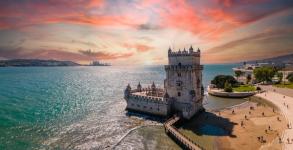

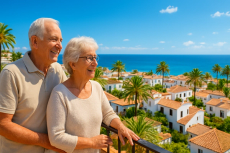



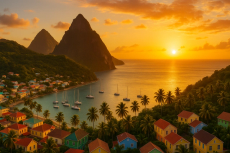
Recently Published
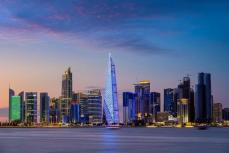


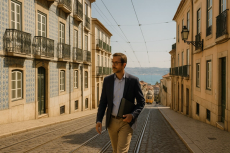



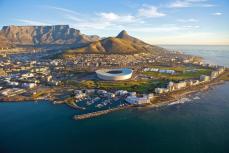

Book a free consultation


